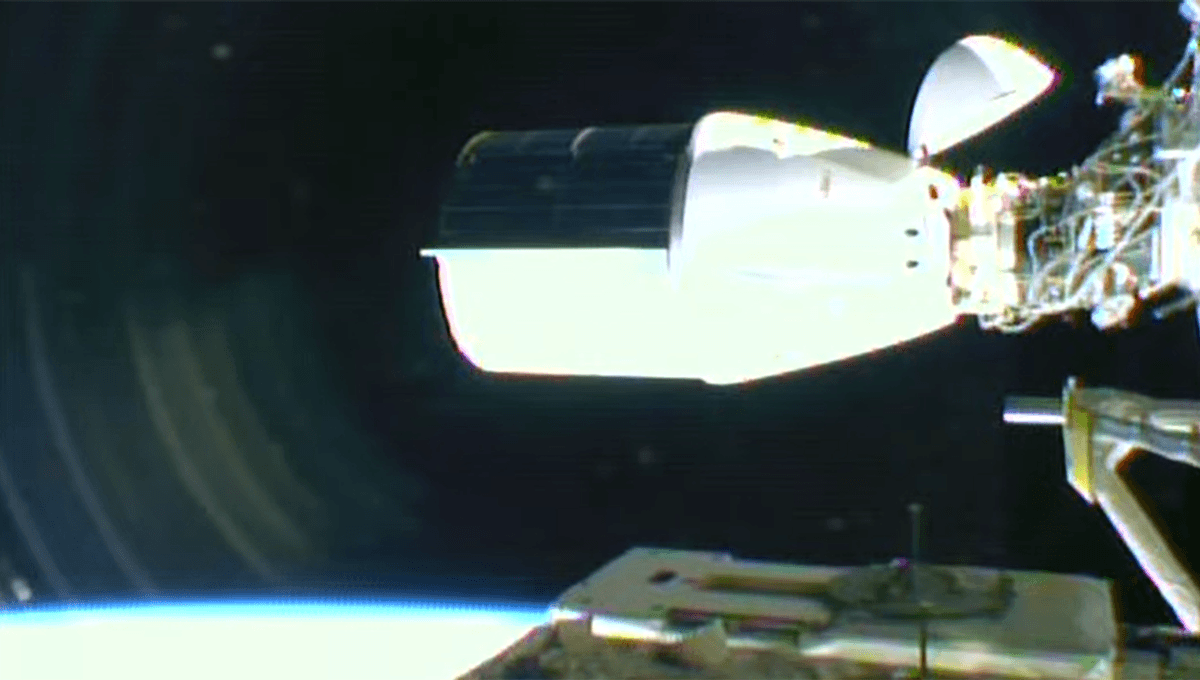
The International Space Station (ISS) is about to be boosted using a new method, 26 years after the orbiting laboratory first launched.
Though you might imagine that the ISS could orbit the Earth long-term like the Moon, it actually needs to be regularly boosted in order to keep it from falling back down to the ground. This is thanks to the drag of the Earth’s atmosphere.
“As you think of the atmosphere where we live and breathe here on Earth, it doesn’t just stop right above our heads. It doesn’t stop at Mount Everest. It doesn’t stop where the planes are flying. It goes on and on all the way up, and just gets less and less dense the higher you go. And it’s still there at a very high altitude,” NASA heliophysics expert Doug Rowland explains in a video.
“When you go to where the Space Station is – only a couple hundred miles above the Earth – there’s still enough air there to slow the Space Station down. And if you didn’t re-boost it with rockets, it would come back to Earth based on the air drag, just like when you’re driving your car.”
As such, the ISS is “re-boosted” regularly. Without that, and depending on solar activity, the station would naturally fall towards the Earth. This boosting is generally done with the space station’s own – not that powerful – thrusters, or utilizing the thrust of spacecraft docked to it.
Now, with the ISS set to be decommissioned in 2030, NASA is set to try a new method of boosting the space station. NASA’s SpaceX 33rd commercial resupply mission, which launched on August 24, is carrying a new booster system along with scientific equipment and astronaut supplies.
“During the mission, Dragon also will perform a reboost demonstration of station to maintain its current altitude,” NASA explains in an update. “The hardware, located in the trunk of Dragon, contains an independent propellant system separate from the spacecraft to fuel two Draco engines using existing hardware and propellant system design. The boost kit will help sustain the orbiting lab’s altitude starting in September with a series of burns planned periodically throughout the fall of 2025.”
The Dragon spacecraft will remain docked to the ISS until December, before returning to Earth. The new system is actually part of the eventual plan to return the ISS to Earth, with SpaceX being commissioned to create the deorbit vehicle that will pull it back down into our atmosphere.
The initial pieces of the ISS were launched in 1998, and by the time operations are over in 2030, they will have been in space for two years longer than their planned lifespan. It is these parts, forming the structure of the space station, that mean the ISS can not continue beyond 2030.
“Much of the space station can be repaired or replaced in orbit, while other parts can be returned to the ground for repair and relaunched. These parts include the solar arrays, communications equipment, life support equipment, and science hardware,” NASA explains. “However, the primary structure of the station, such as the crewed modules and the truss structures, cannot be repaired or replaced practically.”
While we could of course allow it to deorbit naturally, this would be more unpredictable than intentionally landing it away from human infrastructure. While SpaceX will eventually bring the ISS down, for now, it is keeping it in orbit.
Source Link: 26 Years After Launch, The ISS Will Try A New Way To Stay In Orbit Next Month